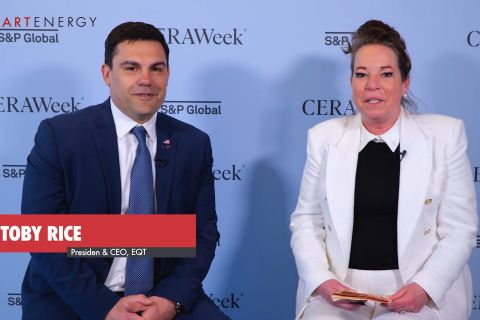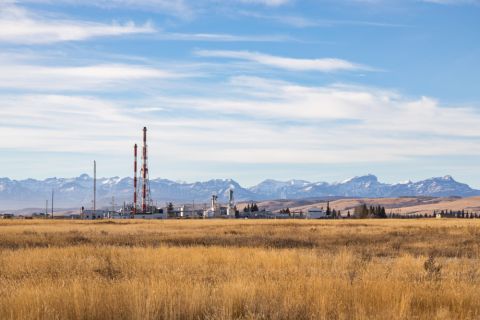Investors are increasing their attention toward E&P companies’ well performance and the longevity of shale inventory as public companies enter 2023 with tailwinds of dramatic broader market outperformance in the year prior amid weakening commodity pricing.
In 2022, the public E&P sector outperformed the S&P 500 by 69% and yet, it continues to maintain superior free cash profiles of roughly 7% at strip versus 5.1% for the S&P, underscoring the dramatic transformation driven by massive deleveraging, cost cutting and consolidation since the COVID-driven lows of early 2020.
Thematically, focus has shifted from ESG/climate concerns and historically poor returns of/on capital to the sustainability of free cash payouts in a world where service costs continue to creep, supply chain issues constrain timing, many companies maintain low hedging balances and questions around inventory arise. To further positive investor sentiment, E&P companies will undoubtedly begin differentiating themselves via reserve and resource quality and longevity, and shifts seen in year-to-year well performance, particularly as these performance changes make their way to the Permian Basin.

Most shale names remain in a band of 0% to 5% production growth, with healthy balance sheets and 7% free cash flow (FCF) yields at strip. Within our research coverage, FCF declines 35% in 2023 at strip pricing, implying that payout yields would be approximately 4% in 2023 versus 9% in 2022, placing more importance than ever on macro-outlooks.
Natural gas has had to contend with a seasonally warm winter, LNG outages and historically high production levels while the oil markets assess the global demand impact of recessionary pressures along with OPEC production cuts.
The public investable universe is still quite healthy at sub-0.5x leverage and still projected to underspend cash flows by 40% in 2023. But in terms of commodity price weakness, there is a limited relief mechanism that now exists on the supply side as former activity declines would have pivoted from growth to maintenance levels, and operators are less likely to pivot from current maintenance levels to sub-maintenance levels. As a result, demand clarity becomes chiefly important and field level execution becomes a differentiator in our view.
For reference, public operators exhibited a 6% degradation in first six months oil recoveries in the Midland Basin and a 5% decline in the Delaware Basin. This follows relatively flattish recovery since 2018. However, lateral lengths continue to increase, offsetting some of the recovery performance. With Midland average lateral lengths at 11,200 ft versus 10,000 ft in 2020 and 9,500 ft in the Delaware versus 8,500 ft in 2020, one wonders if this progression can be sustained. Major tone-setters such as Pioneer Natural Resources Co. and Chevron Corp. have both discussed development methodology changes, higher return thresholds, larger projects and increased co-development.
This situation may yet be another trigger for M&A activity, which dropped precipitously in 2022 by roughly 24% based on deals announced and 13% based on dollars spent. However, of the 54 deals consummated in 2022 above $100 million, roughly 80% came with significant production versus inventory, highlighting the importance of free cash accretion.
In a lower commodity environment, creativity in dealmaking will be key as operators look to attractively add Tier 1 inventory to public models along with operational tweaks and a focus on managing base declines that perhaps were not highly valued previously.
For now, the market appears to be largely in a holding pattern until dealmaking or commodity views heat up. At the same time, our small/mid-cap coverage trades at a 2.0x-plus turn discount to our large-cap names on estimated 2023 EBITDAX valuation multiples and has lagged in stock performance by 26% since the beginning of 2022.
Fourth-quarter 2022 results and capex guides for 2023 will be closely watched as operators navigate inventory life management and challenged performance while fighting costs and lower pricing.
Ultimately, the setup appears to be a perfect storm to catalyze deal activity. We expect that M&A will be a critical path to creating further value, as new shale play exploration is limited and investors clamor for greater visibility around cash flow as public management teams focus on relative return capital versus the S&P 500 versus merely outperforming their peers in years’ past.
David Deckelbaum is the managing director for sustainability and energy transition at Cowen Inc. He is based in New York City.
Recommended Reading
Aethon’s Far Western Haynesville: Three Wells, 17.5 Bcf and Still Roaring
2024-02-05 - Aethon’s wells show no signs of flatlining—and neither are Comstock Resources’ tests, one of which has already reached nearly 50% of its previously estimated EUR.
Mesa III Reloads in Haynesville with Mineral, Royalty Acquisition
2024-04-03 - After Mesa II sold its Haynesville Shale portfolio to Franco-Nevada for $125 million late last year, Mesa Royalties III is jumping back into Louisiana and East Texas, as well as the Permian Basin.
EIA: Permian, Bakken Associated Gas Growth Pressures NatGas Producers
2024-04-18 - Near-record associated gas volumes from U.S. oil basins continue to put pressure on dry gas producers, which are curtailing output and cutting rigs.
CEO: EQT Positioned to Meet Demand of Power-guzzling AI Data Centers
2024-04-01 - EQT Corp.’s Toby Rice said demand for AI could exceed the power demand required to meet U.S. residential demand and jump 20% by 2030, in this Hart Energy Exclusive interview.
Analyst: Chevron Duvernay Shale Assets May Sell in $900MM Range
2024-01-29 - E&Ps are turning north toward Canadian shale plays as Lower 48 M&A opportunities shrink, and Chevron aims to monetize its footprint in Alberta’s Duvernay play.





